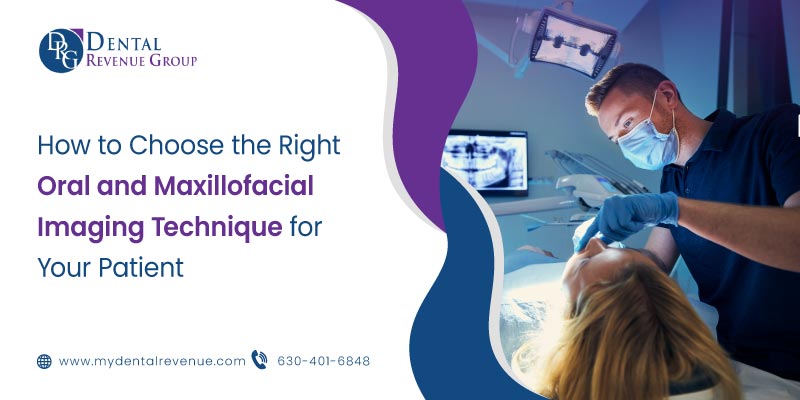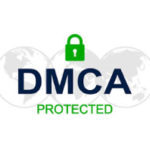When it comes to diagnosing and treating oral and maxillofacial conditions, accurate imaging plays a vital role in ensuring precise assessments and effective treatment plans. With advancements in technology, there are now various imaging techniques available to dental and maxillofacial professionals. In this comprehensive guide, we will explore the different oral and maxillofacial imaging techniques, such as X-ray imaging, Cone Beam Computed Tomography (CBCT), Magnetic Resonance Imaging (MRI), and Ultrasound Imaging. Let’s delve into the world of oral and maxillofacial imaging and equip ourselves with the knowledge to make informed decisions in patient care.
Understanding the Importance of Oral and Maxillofacial Imaging Techniques
When it comes to diagnosing and treating oral and maxillofacial conditions, the importance of imaging techniques cannot be overstated. These techniques provide valuable insights into the structures and tissues within the mouth and face, allowing healthcare professionals to accurately assess and plan treatment for their patients.
Advancements in imaging technology have revolutionized the field of oral and maxillofacial diagnosis. From traditional X-rays to cone beam computed tomography (CBCT), magnetic resonance imaging (MRI), and ultrasound, there is now a wide range of imaging options available. These technologies have improved diagnostic accuracy and enhanced patient care by enabling more precise treatment planning and reducing the need for invasive procedures.
Exploring Different Oral and Maxillofacial Imaging Techniques
X-ray Imaging Techniques
X-ray imaging techniques have long been a staple in oral and maxillofacial diagnosis. Traditional dental X-rays, which use film or digital sensors, provide detailed images of individual teeth and the surrounding structures. These X-rays are commonly used for detecting cavities, evaluating periodontal health, and assessing the bone levels in the jaw.
Panoramic radiography captures a broad view of the entire oral and maxillofacial region in a single image. This technique is particularly useful for assessing impacted teeth, evaluating the temporomandibular joint (TMJ), and planning for orthodontic treatment.
Intraoral radiography involves placing a small sensor or film inside the mouth to capture images of specific areas or individual teeth. This technique is commonly used to identify root canal infections, assess the fit of dental restorations, and detect early signs of dental caries.
Cone Beam Computed Tomography (CBCT)
CBCT is a relatively newer imaging technology that provides highly detailed 3D images of the oral and maxillofacial region. The advantages of CBCT include its ability to provide precise measurements, evaluate complex anatomical structures, and aid in surgical planning for dental implants, orthognathic surgery, and other procedures. CBCT also exposes patients to lower radiation doses compared to traditional medical computed tomography (CT) scans, making it a safer option for routine use in dentistry.
Magnetic Resonance Imaging (MRI)
MRI uses a magnetic field and radio waves to produce detailed images of soft tissues within the oral and maxillofacial region. It is particularly valuable in assessing the TMJ, salivary glands, and soft tissue structures like muscles and nerves.
MRI is unique in its ability to provide multiplanar imaging, which allows for accurate evaluation of complex anatomical relationships. It is commonly used for diagnosing temporomandibular joint disorders, detecting tumors in the salivary glands, and identifying soft tissue abnormalities. However, MRI is not widely available in dental practices and is often reserved for more specialized diagnostic purposes.
Factors to Consider Before Choosing an Imaging Technique
When selecting an imaging technique for a patient, several factors need to be considered. Firstly, patient-specific factors such as age, medical history, and pregnancy should be considered to ensure the chosen imaging technique is safe and suitable. For example, pregnant patients may need to avoid X-rays, and those with metal implants may not be eligible for MRI.
The diagnostic requirements and goals of the healthcare professional also play a crucial role. Different imaging techniques excel in specific areas, so it’s important to match the technique to the desired diagnostic outcome. For example, if a detailed assessment of the TMJ is needed, MRI may be the most appropriate choice.
Cost and availability are practical considerations that need to be considered as well. Some imaging techniques, such as traditional dental X-rays, are more readily available and cost-effective compared to others like MRI or CBCT. Healthcare providers need to balance these factors while ensuring the selected technique meets the diagnostic needs of the patient.
Advantages and Applications of X-ray Imaging Techniques
Traditional Dental X-rays
Traditional dental X-rays remain a valuable tool in oral and maxillofacial diagnosis. These X-rays, which include bitewing X-rays, periapical X-rays, and occlusal X-rays, provide detailed images of individual teeth and their surrounding structures.
Bitewing X-rays are commonly used for detecting cavities between the teeth, while periapical X-rays capture images of the entire tooth, including the roots and supporting bone. Occlusal X-rays offer a larger view of the oral cavity, allowing for the assessment of tooth eruption, development, and the detection of large abnormalities.
Panoramic Radiography
Panoramic radiography provides a broad view of the entire oral and maxillofacial region in a single image. This technique is particularly useful in assessing impacted teeth, evaluating the TMJ, and planning for orthodontic treatment.
The advantages of panoramic radiography include its simplicity, ease of use, and reduced radiation exposure compared to full-mouth X-rays. It is commonly used in general dental practices and provides a valuable overview of the patient’s oral health.
Conclusion
Choosing the right oral and maxillofacial imaging technique for your patient is a crucial step in providing accurate diagnoses and effective treatment plans. By exploring the various imaging options available, considering factors such as patient-specific needs and diagnostic goals, and understanding the advantages and applications of each technique, you can make informed decisions that enhance patient care. Whether it’s traditional X-rays, advanced CBCT, powerful MRI, or ultrasound imaging, the right choice will ultimately contribute to improved outcomes and better oral and maxillofacial health. Stay informed, stay up to date with advancements, and continue to prioritize the well-being of your patients through the selection of the right imaging technique.
Frequently Asked Questions
-
How do I determine which imaging technique is most suitable for my patient?
Choosing the right imaging technique depends on several factors, including the patient’s medical history, age, and the specific diagnostic requirements. Consideration should also be given to the availability and cost of the imaging method. Consulting with a radiologist or oral and maxillofacial specialist can help guide you in making an informed decision.
-
Are there any risks associated with oral and maxillofacial imaging techniques?
While imaging techniques like X-rays and CBCT involve exposure to ionizing radiation, the level of radiation is typically low and considered safe. It is important to adhere to proper safety protocols and use appropriate shielding measures to minimize any potential risks. However, for pregnant patients or those with certain medical conditions, alternative imaging methods like ultrasound or MRI may be recommended to avoid radiation exposure.
-
Can imaging techniques like CBCT or MRI replace traditional X-rays?
CBCT and MRI offer more detailed and comprehensive imaging capabilities compared to traditional X-rays. However, each imaging technique serves a different purpose and has its own advantages and limitations. While CBCT and MRI provide valuable information, traditional X-rays remain useful for routine dental examinations and initial assessments. The choice of imaging technique should be based on the specific diagnostic needs of the patient.
-
Are oral and maxillofacial imaging techniques covered by insurance?
Insurance coverage for oral and maxillofacial imaging techniques can vary depending on the specific insurance plan and the indications for the imaging. Many insurance plans cover X-rays as a standard procedure, while coverage for more advanced imaging techniques like CBCT or MRI may require pre-authorization or be subject to specific medical necessity criteria. It is recommended to verify coverage with the patient’s insurance provider before proceeding with any imaging procedure.











